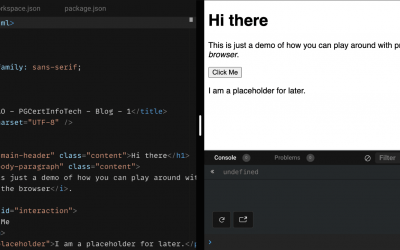Agile (Scrum), Waterfall, and Kanban are three popular project management methodologies used in organisations.
Each methodology has its own strengths and weaknesses, and their suitability for cross-functional projects may vary. Let’s quickly explore the pros and cons of each approach:
| Agile (Scrum) | Waterfall | Kanban | |
| Pros |
Cross-functional collaboration High stakeholder engagement Flexible, adaptable |
Clear structure Documentation Predetermined requirements |
Visual Flexible Continuous improvement |
| Cons |
Complex in large projects Unpredictable Requires experience |
Limited flexibility Limited stakeholder involvement |
Lack of structure Limited planning May require discipline |
| Suitable for types of project that are |
Complex, evolving Software development Cross-functional |
Well-defined Traditional industries Require sequential processes are critical |
Continuous workflow Support & maintenance Service-oriented |
Agile (Scrum), waterfall, and Kanban are three popular project management methodologies used in organisations.
Each methodology has its own strengths and weaknesses, and their suitability for cross-functional projects may vary. Let’s explore the pros and cons of each approach:
Agile (Scrum framework):
Agile (Scrum) is an iterative and incremental approach that emphasises collaboration, flexibility, and responsiveness to change. It focuses on delivering small increments of value in short iterations called sprints.
Pros:
– Flexibility and adaptability: Agile (Scrum) allows for changes in project requirements and scope throughout the development process, accommodating evolving business needs.
– Stakeholder engagement: Regular feedback and collaboration with stakeholders lead to increased customer satisfaction and a higher likelihood of delivering a product that meets their needs.
– Cross-functional collaboration: Agile (Scrum) promotes close collaboration between different teams and encourages self-organisation, enabling cross-functional projects to be more efficient.
Cons:
– Complexity in large projects: Agile (Scrum) may face challenges in large-scale projects with multiple teams, as coordination and alignment across teams can become more difficult.
– Lack of predictability: Agile (Scrum) projects may have less predictable schedules and budgets due to the flexible nature of the methodology, which can be a concern for some organisations.
– Requires experienced team members: Agile (Scrum) requires skilled team members who are comfortable with self-organisation and can adapt to changing requirements and priorities.
Waterfall:

Waterfall is a sequential, linear approach where each phase of a project is completed before moving on to the next. It follows a structured process from initiation to completion.
Pros:
– Clear structure: The sequential nature of waterfall provides a clear roadmap and defined milestones, making it easier to plan and manage projects.
– Documentation: Extensive documentation is created at each stage, which helps in future reference and auditing.
– Well-suited for stable requirements: Waterfall works well when the project requirements are well-defined and unlikely to change significantly.
Cons:
– Limited flexibility: Once a phase is completed, it is difficult to go back and make changes without affecting subsequent stages. This lack of flexibility can be a drawback in dynamic or uncertain projects.
– Limited stakeholder involvement: Stakeholder involvement is minimal after the initial requirements gathering phase, which can lead to a lack of collaboration and feedback.
Kanban:
Kanban is a visual Agile framework that focuses on the flow of work and limiting work in progress (WIP). It helps teams visualise their work and optimise the workflow to increase efficiency.
Unlike the sprint-based Agile methodology mentioned earlier on, Kanban is more flexible and adapts to existing team structures by grouping tasks on a board like the image above.
Pros:
– Visual representation: Kanban boards provide a clear visual representation of the project’s progress, making it easier to track and manage tasks.
– Flexibility: Kanban allows for flexibility in task prioritisation and resource allocation, accommodating cross-functional requirements and workload balancing.
– Continuous improvement: Kanban emphasises optimising the workflow by identifying and addressing bottlenecks, leading to continuous improvement.
Cons:
– Lack of structure: Kanban is less prescriptive compared to agile and waterfall, which can be a disadvantage when teams need a more defined structure and project plan.
– Limited planning and forecasting: Kanban focuses on immediate work, so long-term planning and forecasting can be challenging.
– May require discipline: Kanban relies on team discipline to ensure that WIP limits are respected and work is properly managed. Lack of discipline can lead to inefficiencies and delays.
Hybrid approaches that blend different methodologies are also common, allowing organisations to tailor their project management practices to suit the unique characteristics of each project.
If you want to become a better project manager, Waipapa Taumata Rau | The University of Auckland offers an 100% online short course, Project Management Bodies of Knowledge, that covers the above information in-depth and more.
Start Your Online Learning Journey
We collect your contact details so we can send you information about studying at the University of Auckland. Please read our Privacy Policy for more information.
Fast Track to Success: Discover the Benefits of Online Short Courses
Are you looking for ways to advance your career and achieve success? If so, an online short course with Waipapa Taumata Rau | The University of Auckland could be the perfect solution for you.
Unlock Your Potential: Exploring Online Short Courses at The University of Auckland
In today's fast-paced professional world, continuous learning and upskilling have become necessities rather than luxuries. The University of Auckland, New Zealand's top-ranked university, presents a brilliant solution for ambitious professionals who aim to scale new...
Experimenting with programming in the browser
How to Learn the Basics of Programming? Getting started with programming can be a daunting prospect. Reading code can seem like you're reading a foreign language. Also, there are a huge amount of resources available online - but where do you start? Today we'll be...






Recent Comments